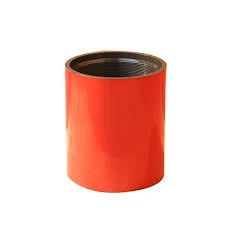- Afrikaans
- Albanian
- Amharic
- Arabic
- Armenian
- Azerbaijani
- Basque
- Belarusian
- Bengali
- Bosnian
- Bulgarian
- Catalan
- Cebuano
- Corsican
- Croatian
- Czech
- Danish
- Dutch
- English
- Esperanto
- Estonian
- Finnish
- French
- Frisian
- Galician
- Georgian
- German
- Greek
- Gujarati
- Haitian Creole
- hausa
- hawaiian
- Hebrew
- Hindi
- Miao
- Hungarian
- Icelandic
- igbo
- Indonesian
- irish
- Italian
- Japanese
- Javanese
- Kannada
- kazakh
- Khmer
- Rwandese
- Korean
- Kurdish
- Kyrgyz
- Lao
- Latin
- Latvian
- Lithuanian
- Luxembourgish
- Macedonian
- Malgashi
- Malay
- Malayalam
- Maltese
- Maori
- Marathi
- Mongolian
- Myanmar
- Nepali
- Norwegian
- Norwegian
- Occitan
- Pashto
- Persian
- Polish
- Portuguese
- Punjabi
- Romanian
- Russian
- Samoan
- Scottish Gaelic
- Serbian
- Sesotho
- Shona
- Sindhi
- Sinhala
- Slovak
- Slovenian
- Somali
- Spanish
- Sundanese
- Swahili
- Swedish
- Tagalog
- Tajik
- Tamil
- Tatar
- Telugu
- Thai
- Turkish
- Turkmen
- Ukrainian
- Urdu
- Uighur
- Uzbek
- Vietnamese
- Welsh
- Bantu
- Yiddish
- Yoruba
- Zulu
Understanding Metric Pipe Couplings and Their Applications in Various Industries
Understanding Metric Pipe Couplings A Comprehensive Overview
Metric pipe couplings are essential components in various piping systems, serving as connectors that join two pipes while ensuring a secure and leak-free connection. These couplings are designed to meet international metric standards, accommodating various industrial applications, from plumbing and HVAC systems to chemical processing and oil and gas transportation.
What are Metric Pipe Couplings?
Metric pipe couplings are fittings that typically feature one or two female ends for interfacing with male pipe ends. Constructed from materials such as stainless steel, brass, plastic, and other metals, these couplings are engineered to withstand different pressures, temperatures, and environmental conditions. They are dimensioned according to the International System of Units (SI), making them compatible with equipment and piping that also adhere to metric measurements.
Types of Metric Pipe Couplings
There are several types of metric pipe couplings, each suited for specific applications
1. Compression Couplings These couplings create a tight seal when the pipe is inserted and securely fastened, often using ferrules or compression rings. They are widely used in plumbing and HVAC applications.
2. Threaded Couplings Featuring external or internal threads, these couplings provide a mechanical connection between pipes. They are often employed in situations requiring easy installation and disconnection.
3. Welded Couplings Made for permanent connections, these couplings are welded onto the pipe ends, providing excellent strength and integrity even under extreme conditions. They are commonly used in industries such as oil and gas.
4. Flanged Couplings These couplings have flanges at the ends that are bolted together, allowing for easy disassembly and maintenance. They are prevalent in larger piping systems, such as water treatment facilities.
5. Slip-on Couplings These couplings slide over the ends of the pipes before being welded, offering ease of installation. They are often used in plumbing and various industrial applications.
Benefits of Using Metric Pipe Couplings
The use of metric pipe couplings offers several advantages
1. Standardization They meet international standards, ensuring interoperability with other equipment and components designed using metric measurements. This standardization simplifies project planning and implementation.
metric pipe couplings

2. Variety of Materials The availability of couplings in different materials allows users to select the appropriate type based on environmental conditions, chemical compatibility, and mechanical requirements.
3. Improved Flow Dynamics Properly designed metric couplings minimize flow resistance, helping maintain efficient fluid transport in piping systems.
5. Enhanced Durability Quality metric pipe couplings are designed to resist corrosion, pressure fluctuations, and high temperatures, ensuring long-lasting performance.
Selecting the Right Metric Pipe Coupling
When choosing the right metric pipe coupling for an application, several factors must be considered
1. Pipe Size and Type Ensure the coupling matches the outer diameter of the pipe being used. Different standards exist, so knowing the specific measurements is crucial.
2. Material Compatibility Evaluate the environment in which the coupling will be used. For example, harsh chemicals might require a corrosion-resistant material like stainless steel.
3. Pressure Rating Assess the pressure requirements of the system to select a coupling that can withstand those conditions without failure.
4. Installation Method Consider whether you need a temporary or permanent connection. This will help determine whether to choose compression, threaded, or welded couplings.
5. Regulatory Compliance Check local regulations or industry standards that may dictate specific requirements for piping systems in certain applications.
Conclusion
Metric pipe couplings are vital components in modern piping systems, offering flexibility, durability, and reliability across various applications. Understanding the different types and their respective benefits assists in making informed decisions that enhance the overall performance of fluid transport systems. As industries continue to evolve, the demand for robust and standardized coupling solutions will only grow, underscoring the importance of these essential fittings in our infrastructure.
-
Tubing Pup Joints: Essential Components for Oil and Gas OperationsNewsJul.10,2025
-
Pup Joints: Essential Components for Reliable Drilling OperationsNewsJul.10,2025
-
Pipe Couplings: Connecting Your World EfficientlyNewsJul.10,2025
-
Mastering Oilfield Operations with Quality Tubing and CasingNewsJul.10,2025
-
High-Quality Casing Couplings for Every NeedNewsJul.10,2025
-
Boost Your Drilling Efficiency with Premium Crossover Tools & Seating NipplesNewsJul.10,2025







